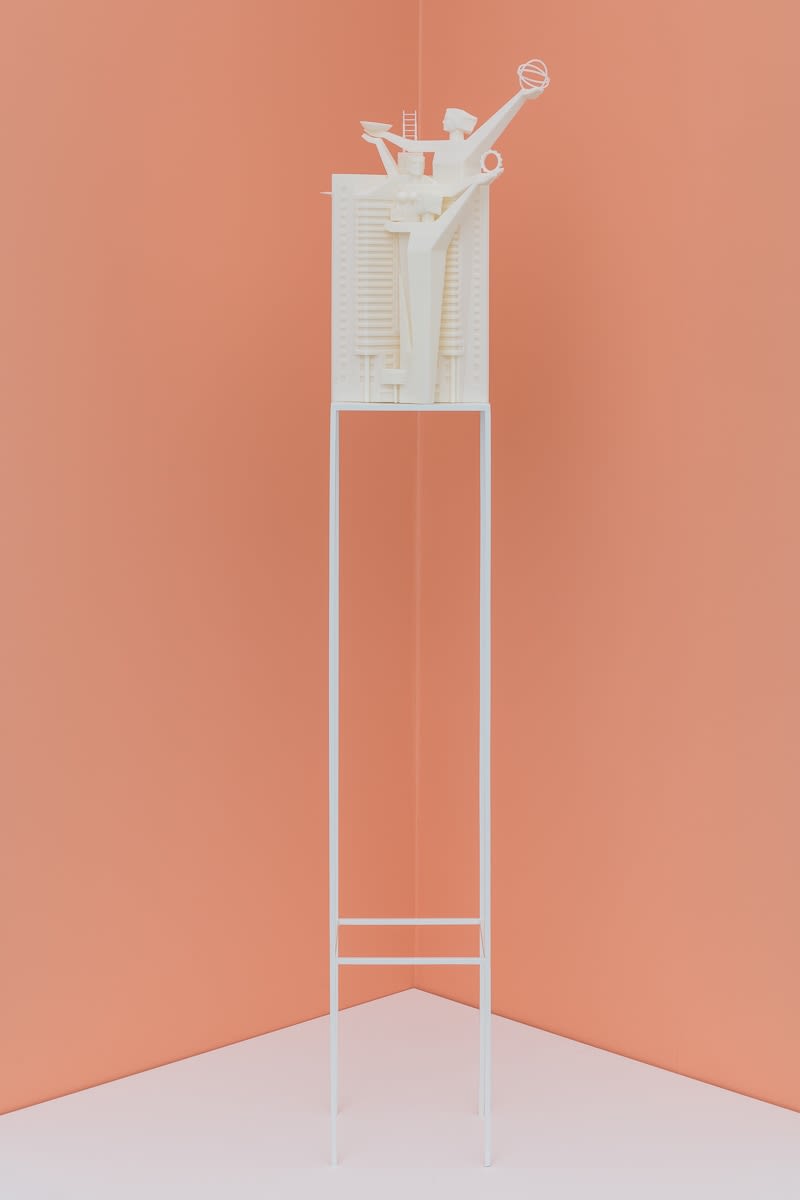



Cui Jie
Guangzhou Telecom Building, 2017
3D Print photopolymer resin
24.4 x 26.5 x 50 cm
9 5/8 x 10 3/8 x 19 3/4 in
9 5/8 x 10 3/8 x 19 3/4 in
Edition of 3 plus 2 artist's proofs
Copyright The Artist
Further images
Cui uses the motifs of the Guangzhou building and the abstract sculptural form which runs through the middle of the composition in combination to produce a new composite structure. The...
Cui uses the motifs of the Guangzhou building and the abstract sculptural form which runs through the middle of the composition in combination to produce a new composite structure. The dynamic, curving shape at the centre of the work that merges with the skyscraper is an example of new public monuments in China’s urban metropolises.
These symbols usually decorate public plazas and are a form of coded visual language carefully decided by regional authorities to embody certain ideals. Expansive dynamic shapes usually refer to concepts of strength and forward-progress. These tenets of Communist thought are interpreted through visual forms to then be placed at the centre of newly built districts to inspire the citizens it is designed for.
The sculptures are key to Cui’s exhibitions, as her practice moves towards more thorough investigations of urban design. On the one hand they recall a maquette or diorama used by architects, only for Cui Jie, they are uncanny blueprints that amalgamate past and present imagery to produce a slightly dystopian, futuristic form, emphasised by her use of cutting edge 3-D printing technology.
These symbols usually decorate public plazas and are a form of coded visual language carefully decided by regional authorities to embody certain ideals. Expansive dynamic shapes usually refer to concepts of strength and forward-progress. These tenets of Communist thought are interpreted through visual forms to then be placed at the centre of newly built districts to inspire the citizens it is designed for.
The sculptures are key to Cui’s exhibitions, as her practice moves towards more thorough investigations of urban design. On the one hand they recall a maquette or diorama used by architects, only for Cui Jie, they are uncanny blueprints that amalgamate past and present imagery to produce a slightly dystopian, futuristic form, emphasised by her use of cutting edge 3-D printing technology.
Exhibitions
Witness, Pilar Corrias, London, 7 April - 4 May, 2018The Enormous Space, OCAT Shenzhen, China (20 January - 8 April, 2018)



